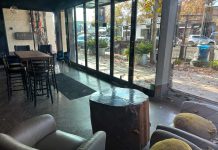They will not be adopted until February, but officials this week offered an early peek at Gilroy’s ambitious education goals for 2017, many made possible by one of last year’s big successes: Measure E.
There’s one glitch: languishing plans for California’s slow-moving bullet train have put some Gilroy Unified School District blue prints on hold.
“The High Speed Rail project will change the City of Gilroy and will potentially (cause) substantial changes to some GUSD schools and operational facilities,” Assistant Superintendent Alvaro Meza said in an email.
That means, if the train line goes through downtown, then Gilroy Prep, the district’s high-achieving charter school, and South Valley Middle School, with its substantial operations and transportation hubs, will need major rebuilding or will have to be relocated and replaced with new schools.
“The District is engaged with the High Speed Rail Authority and is actively seeking some answers on identifying its potential impacts,” Meza acknowledged Monday.
But with the unknown come more work and potentially more expense for the district.
“Until the (track) location is determined, and more specific information is known, the District will be focused on planning with various scenarios involved as it relates to the planned renovation of South Valley,” he said.
On the bright side, district officials have wiggle room on plans for SVMS; improvements to the aging campus at IOOF (sic) and Murray avenues will not be funded for three years, during the second round of Measure E bond sales.
Here’s the other wrinkle that makes new SVMS and GPS campuses an attractive possibility: Gilroy is in line for tens of millions of dollars in state Prop. 51 funds, which can be added to the $170 million in bond money from Measure E.
The $9 billion, state school facilities proposition voters passed in November provides matching funds for local projects. Under its provisions, districts get the most state money for new construction projects—dollar for dollar reimbursement for new, 40 cents on the dollar for renovations.
With the combination of an unknown bullet train path and a windfall in state money in the balance, some GUSD plans are likely to remain up in the air, maybe for some time, even as the district grapples with an expected surge in student numbers from accelerated new home building.
As Meza put it, for example, the rest of the SVMS story is, “To be continued.”
In the meantime, trustees, department heads and Superintendent Debbie Flores will have their hands full with other major undertakings in 2017.
“I could go on and on as there is so much more happening in the district,” Flores responded when asked to outline 2017 goals.
This much is clear, roughly half of the projects and programs she and Meza outlined involve facility improvements funded completely or mostly by local taxpayers via Measure E.
However, education goals unrelated to new facilities are equally crucial to the district’s mission, according to officials.
Take the on-going, nationwide teacher shortage, for example. Veteran schools trustee Jaime Rosso called it the “biggest challenge” facing GUSD in 2017.
The district will unroll in coming months detailed recruitment strategies to attract teachers and substitute teachers. It’s believed recent pay hikes for both will help, according to Flores.
Still, there are “no easy solutions as this is a multifaceted problem,” Rosso said, involving “financial uncertainty, a challenging teaching profession, relatively low compensation and the very high cost of living…particularly here in the Bay Area.”
Here are some other highlights that will unfold over the next year, some tied to the sale of the first $60 million in bonds, which is expected this month.
New grade school
Architects will begin drafting blue prints for a new, 800-student elementary school on Santa Teresa Boulevard at Club Drive. The cost is an estimated $40 million and it will take up to five years to build.
New books
With many texts ten or more years old, GUSD will begin a new book buying program, starting with math texts. Teachers are piloting new English textbooks for next year.
High tech
More than $12 million in infrastructure improvements will be the backbone of the wide-range of technologies that the District will bring to the classrooms, starting this year. They will include 21st century IT upgrades and new computers district-wide.
GHS expansion
Gilroy High School will add a two-story, 20-classrom building to increase capacity and replace 13 old portables. The cost: $13 million to $15 million.
Solar power
To lower energy costs and improve campus safety, parking lot-size solar power-generating carports will be installed at Gilroy and Christopher high schools.
English leaners
To help Spanish-speaking, English Language Learner students develop the language and literacy skills needed to succeed, GUSD has expanded its Sobrato Early Academic Language (SEAL) program to three more elementary schools, El Roble, Rucker and Antonio Del Buono.
School climate
To foster good student behaviour and decrease the bad, programs such as Character Counts and Restorative Justice will be implemented, with the expectation of a continued reduction in discipline referrals, suspensions and expulsions.













